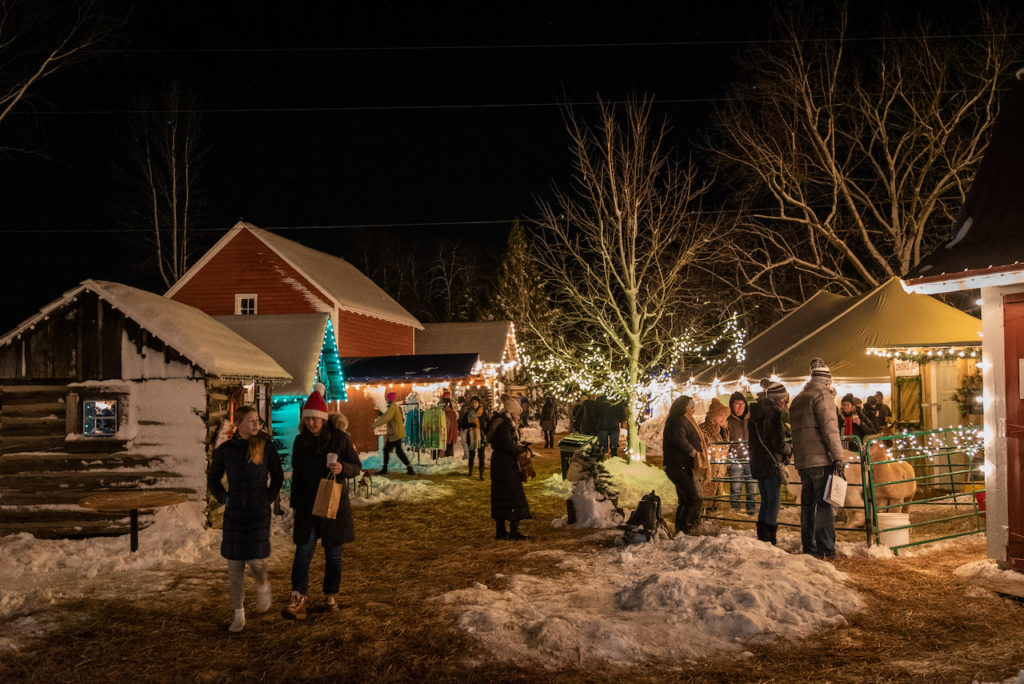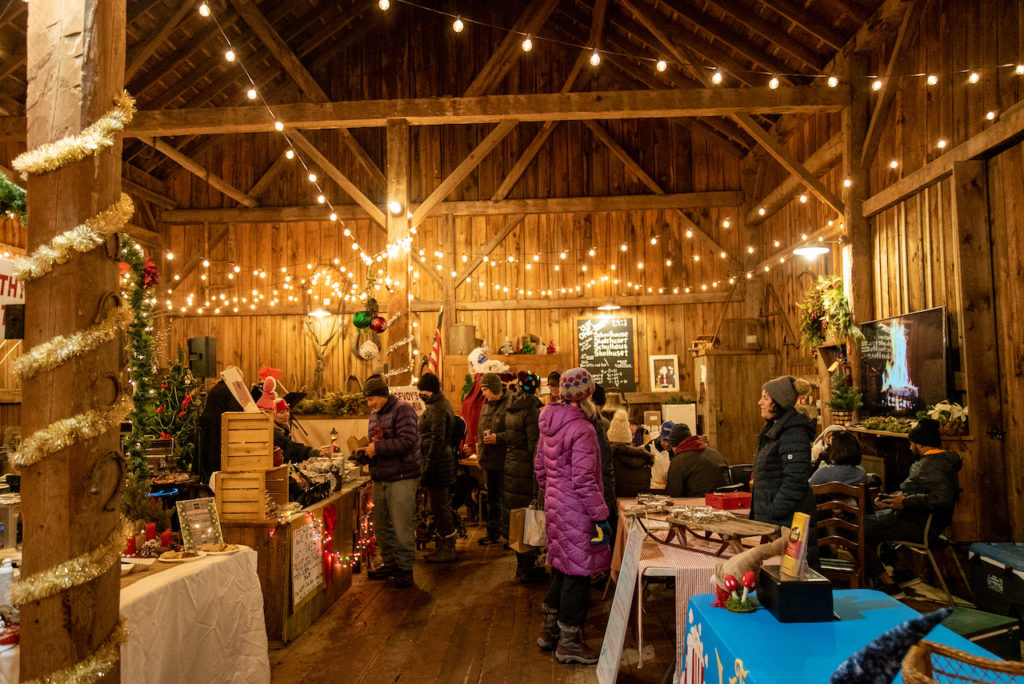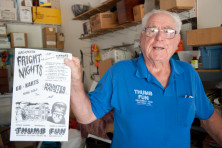Winter Fun in Door County
- Share
- Tweet
- Pin
- Share

Christkindlmarkt
The Christkindlmarkt is returning to Sister Bay for the second year over three weekends: Nov. 25-27, Dec. 2-4 and Dec. 9-11. Last year’s event drew 10,000 visitors to the Corner of the Past Museum in Sister Bay to check out artists, artisans, beverages, food and live music. Also expect visits from Santa in the barn and cabins of this recreated pioneer homestead.
Egg Harbor New Year’s Day Parade
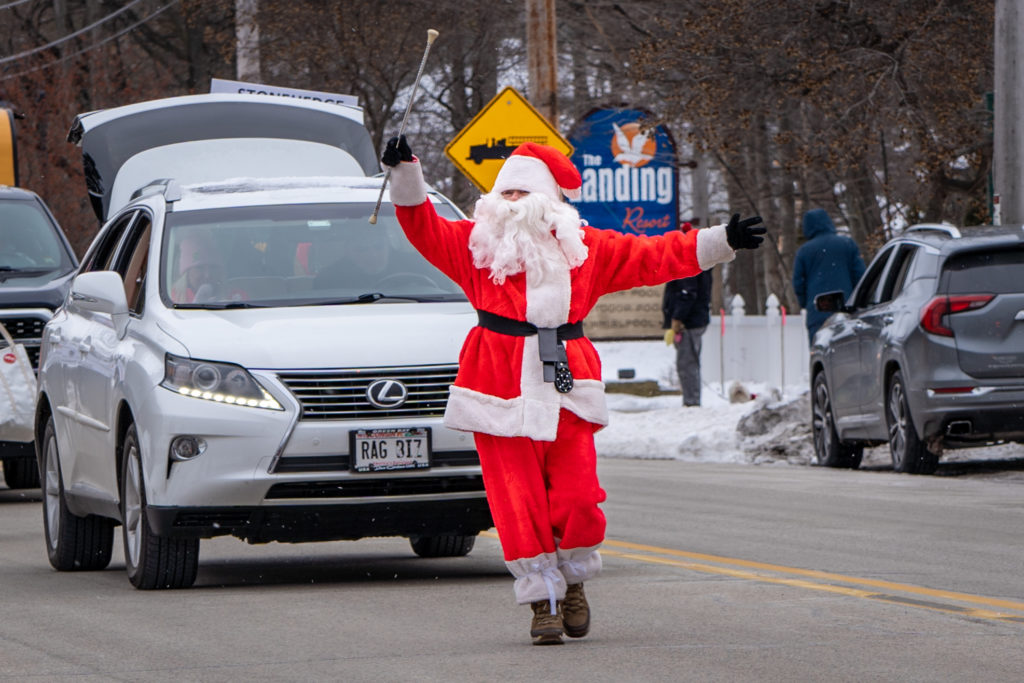
After the plunge, Egg Harbor’s tradition takes center stage. Short, goofy and fun, the parade has rolled through the village each New Year’s Day since the 1970s.
Cherry Drop
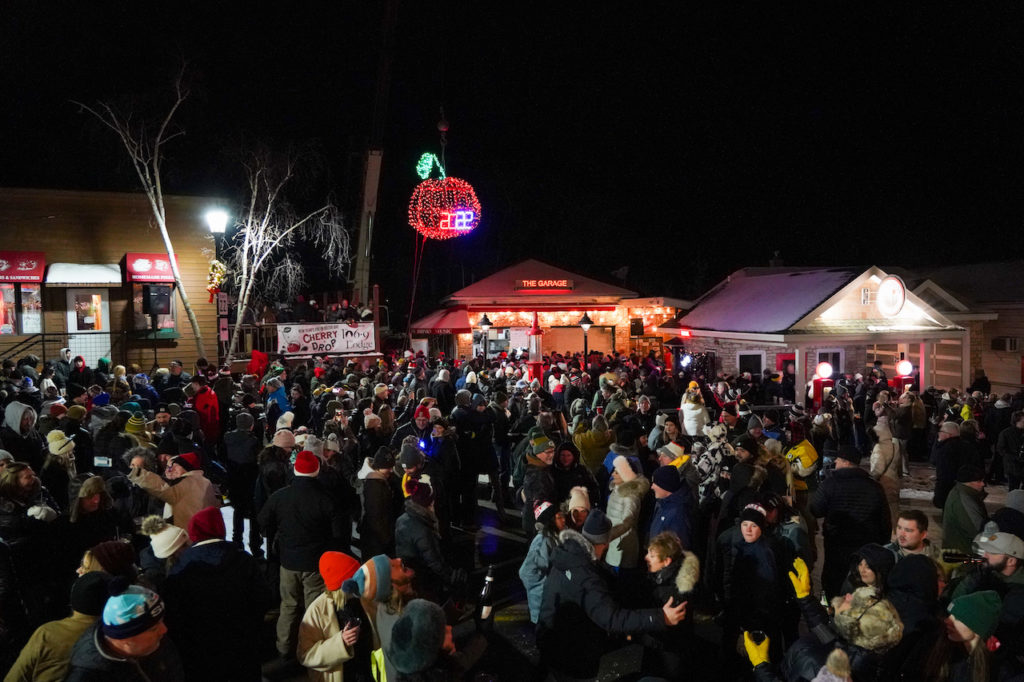
In the days before New Year’s Eve, a six-foot-wide, 300-pound cherry made of colored lights hangs over Husby’s in Sister Bay, waiting to descend into the new year. The brainchild of Mike Mesic and Jaime Forest of FM 106.9 The Lodge radio station, the cherry draws thousands to the hill between Husby’s and the Sister Bay Bowl for the drop at midnight on Dec. 31.
The Sister Bay Advancement Association gets the evening started with open skating and fireworks at the Teresa K. Hilander Community Ice Rink. The fireworks launch at 8 pm, so you can get in on the fun even if you aren’t a late-night party animal.
Jacksonport Polar Plunge
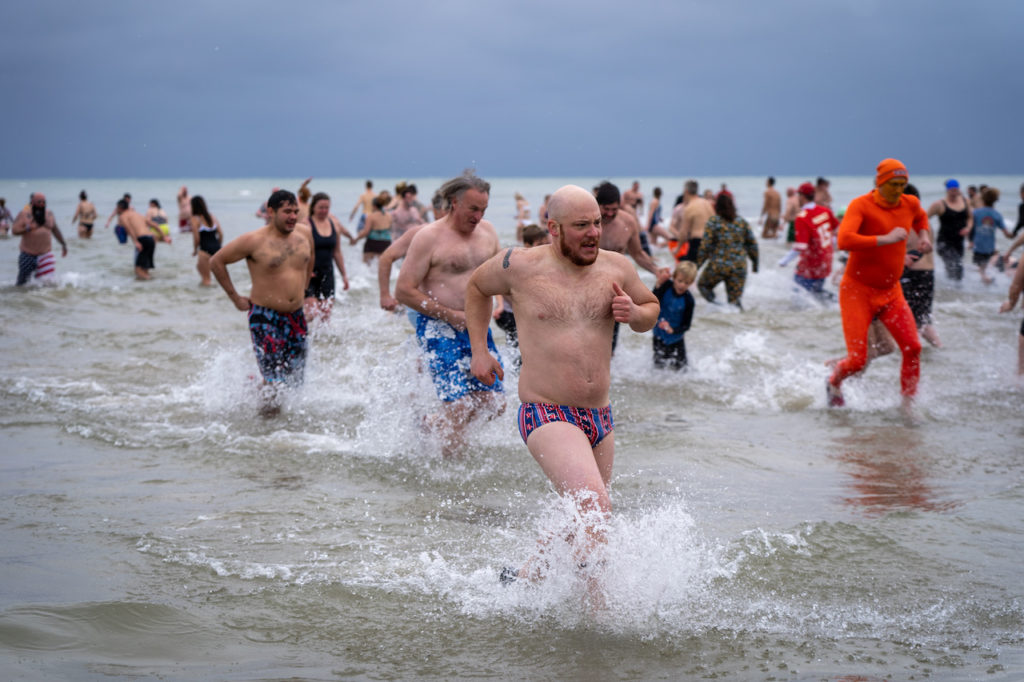
For 30 years, the Jacksonport Polar Plunge has been the way to start the year with a clean – and freezing cold – slate. Hundreds of residents and visitors sprint into the icy waters at Lakeside Park to clear out the cobwebs of a long night or a long year.
A Loopy Run
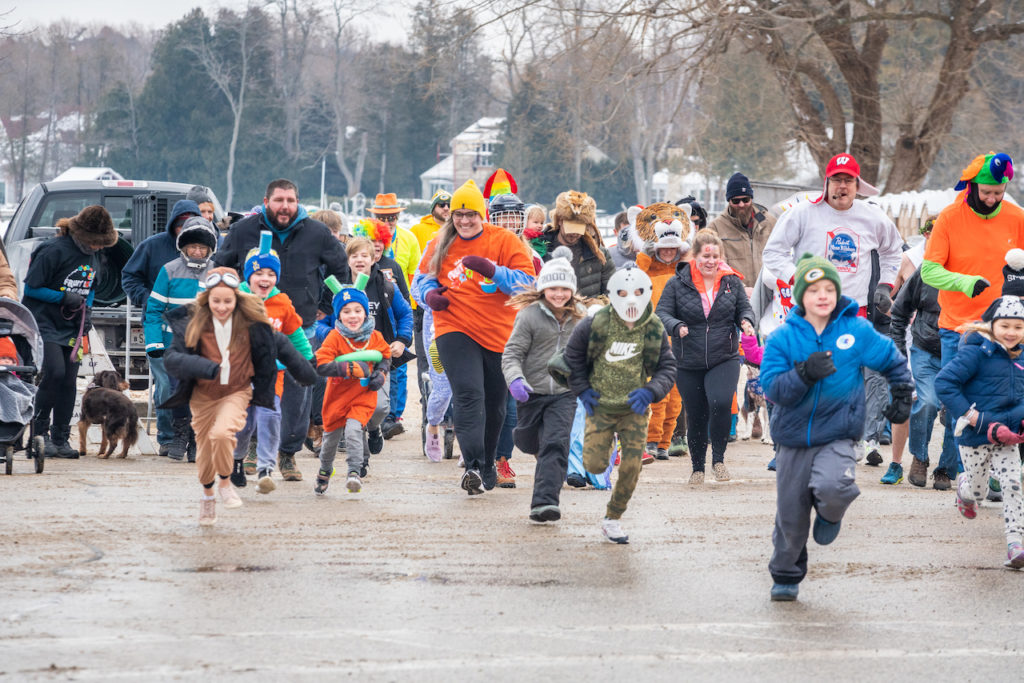
Running has boomed on the peninsula over the past 15 years with the growth of the Door County Triathlon, Half Marathon and Run the Door race series. But running here isn’t always so serious.
During Fish Creek’s annual Winter Festival in February, a few dozen “competitors” lace up their sneakers and don silly costumes for the Fruit Loop Fun Run. Launched in 2010 to add another goofball aspect to an event that’s already full of oddball activities such as cherry-pit spitting, toilet-seat tossing and minnow races, the run/walk – a full 1/53rd of a marathon! – ends with a Fruit Loops breakfast and awards for the field of top “athletes.”
The 2023 Winter Festival will take place Feb. 3-5.
What’s a Stumpf Fiddle?
Don’t let the name fool you. Although the stumpf fiddle – sometimes called a polka-cello, bumbass or hum strum – melds percussion and string instruments, it is in no way a fiddle.
Most commonly, the homemade instrument consists of door springs for strings, a pie tin, horns and any other noisy adornments the maker fancies. And although all the bells and whistles might give the quirky instrument an intimidating appearance, it’s relatively easy to play: Just bounce it on the ground and strike the various components with a stick.
Stumpf fiddles are fairly easy to make, too.
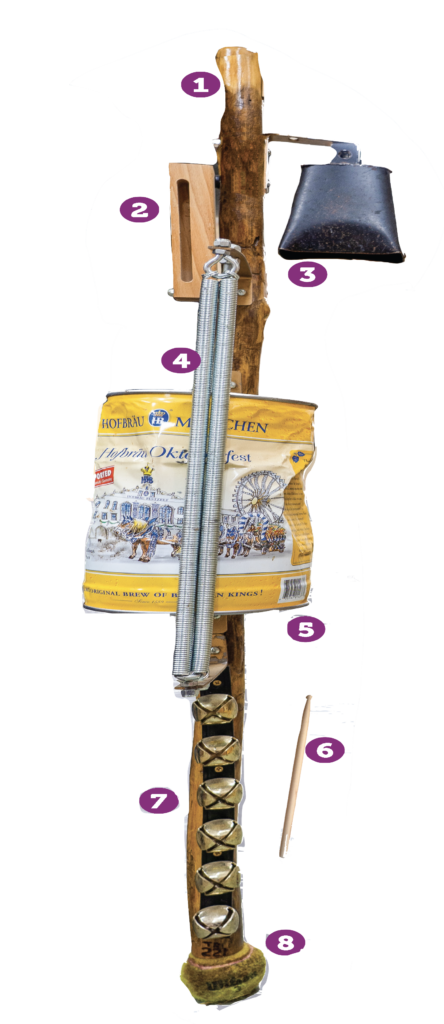
“Generally, people make these instruments out of whatever they can find around their house,” said Bob Spielman, who “tunes up” the stumpf fiddles each year in preparation for Fish Creek’s Winterfest competition. “Really, anything that you can find and attach that makes noise.”
Pans, cans, bells, washboards – they’re all up for grabs. And although there’s no wrong or right way to make a stumpf fiddle, they generally include a few key parts.
(1) Stick: A walking stick or an old broomstick works – nothing fancy here. (2) Wood block: Add a piece of solid wood for percussive effect. (3) Bell: Any type of bell will do, but cowbells are a popular pick. (4)“Strings”: A pair of door springs is a common choice. (5) “Tambourine”: This is generally an empty coffee can or pie tins filled with something that rattles, from dried corn and beans to metal nuts and bolts. (6) Beat stick: This is usually a drumstick that’s used to strike the various parts of the stumpf fiddle, preferably in time with the beat. (7) Sleigh bells: Add some jingle and jangle to the rhythm. (8) Tennis ball: A tennis ball, or sometimes a rubber ball, is attached to the stick, creating a base with just enough give to bounce the instrument.

